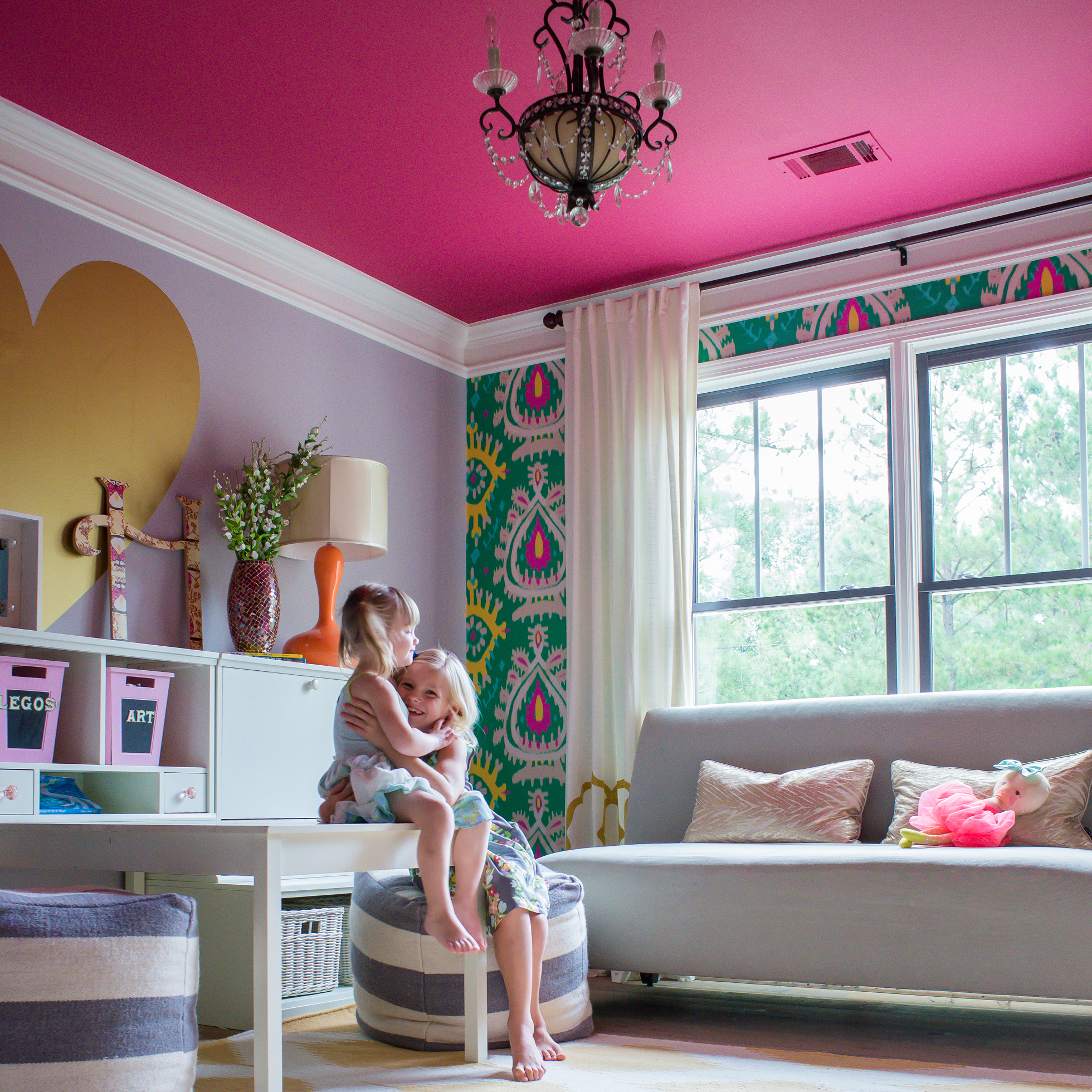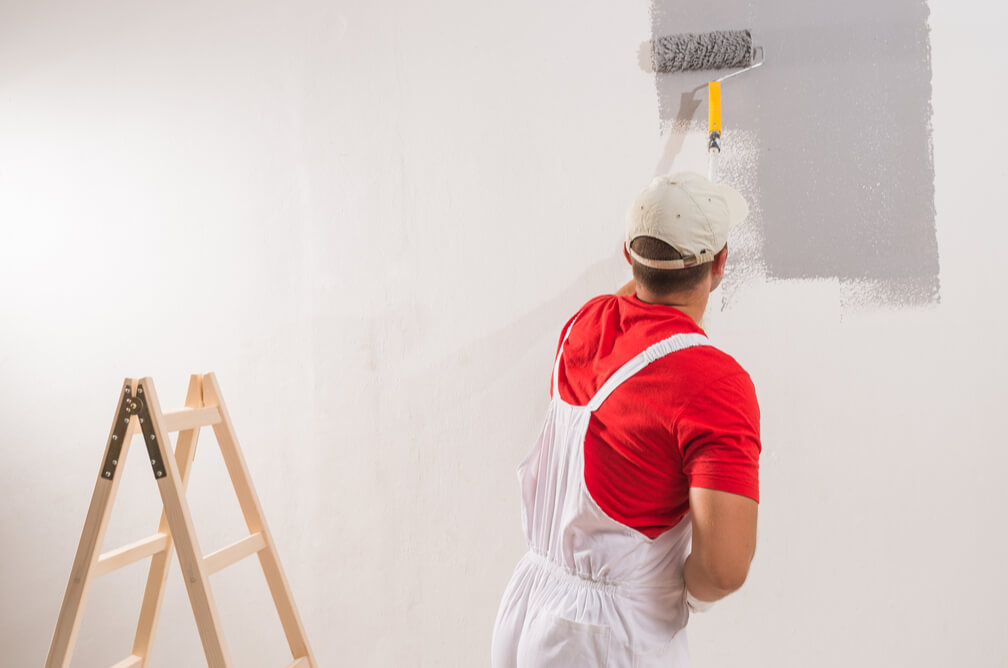Enhance Your Interior Decoration With Comprehensive Color Appointment
The assimilation of color consultation right into interior design presents a distinct opportunity to fine-tune and elevate the psychological and visual vibration of an area. By engaging with a skilled shade consultant, you can browse the complexities of shade option, guaranteeing that your selections not only enhance architectural attributes but additionally reverberate with individual style and psychological effect.
Benefits of Shade Consultation

Furthermore, shade examination aids in making the most of natural light and maximizing spatial assumption. Lighter colors can make a room appear even more large, while darker tones create an intimate setting. Cleveland Metro Painting Specialists. This critical application of shade can significantly affect the general setting of any kind of indoor area
Additionally, specialist specialists have a detailed understanding of current patterns and classic standards, ensuring that the selected colors will stay attractive over time. This insight can save clients from expensive redesigns in the future. Color appointment encourages customers by providing them with a clear vision and direction, promoting confidence in their design choices and ultimately leading to an extra effective and gratifying indoor design result.
Recognizing Shade Psychology
The significance of shade psychology in indoor style can not be overemphasized, as it looks into the psychological and psychological impacts that numerous hues can stimulate in individuals. Colors can affect state of mind, habits, and also efficiency, making them a critical consideration in any kind of design project.
As an example, warm shades such as red, orange, and yellow are commonly related to power and warmth. They can boost sensations of exhilaration and comfort, making them suitable for social rooms like living kitchens or areas. On the other hand, cool shades like blue, environment-friendly, and purple often tend to stimulate peace and serenity, making them perfect for bed rooms or reflection locations.
Additionally, making use of neutral tones can develop a balanced environment by enabling the bolder shades to stand out without overwhelming the detects. Comprehending these mental effects allows developers to create rooms that not only look cosmetically pleasing however likewise advertise emotional wellness.
Integrating color psychology into interior decoration includes a thoughtful option of tones customized to the intended feature of each room, eventually improving the general experience for its residents. This recognition is essential for accomplishing a unified and useful interior setting.
The Shade Wheel Clarified
Recognizing the partnerships in between tones is important for effective interior decoration, and the shade wheel functions as a useful device in this process. The color wheel, developed by Isaac Newton in the 17th century, highlights the range of shades set up in a round format. It makes up main shades-- red, blue, and yellow-- that can not be developed by blending other shades. Secondary colors, formed by combining key shades, consist of environment-friendly, orange, and purple. Tertiary shades result from blending a main and an additional color, causing tones such as blue-green and red-orange.
The shade wheel assists developers understand the relationships between colors, consisting of complementary, similar, and triadic systems. Corresponding colors, positioned opposite each other on the wheel, develop vibrant contrasts that can energize a space. Analogous shades, situated alongside each other, give a unified and natural look. Triadic systems utilize 3 evenly spaced colors, supplying equilibrium and aesthetic rate of hop over to here interest.
Using the color wheel in interior decoration not just enhances aesthetic allure however additionally evokes details feelings and environments, making it an essential recommendation for shade consultation. Comprehending these partnerships ultimately equips designers to create spaces that are both useful and aesthetically fascinating.
Selecting the Right Combination
An appropriate color plan can combine an area, boost its attributes, and stimulate preferred feelings. Various spaces offer varied functions and require palettes that show their designated usage; for instance, tranquil shades such as soft blues or eco-friendlies work well in bedrooms, advertising leisure.
Light can drastically change exactly how colors appear, so it is necessary to evaluate the space at various times of the day. A harmonious scheme should enhance these functions, developing a natural look throughout the area.
When picking colors, use the 60-30-10 guideline, which recommends that 60% of the room must be a dominant shade, 30% a second color, and 10% an accent color. This ratio makes sure equilibrium and aesthetic rate of interest (Cleveland Metro Painting Specialists). Finally, example colors on the wall surfaces before dedicating, as this allows you to see how the shades engage with one an additional and the overall atmosphere they produce in your interior decoration project.
Working With a Shade Expert

When dealing with a shade expert, the process commonly starts with an initial consultation. Throughout this conference, you'll discuss your vision, choices, and the existing components in your space. The professional will analyze your needs and may advise specific shade schemes that straighten with your goals.
After Full Article developing an instructions, the specialist will give examples and visual help to assist you envision the recommended color pattern. This action is critical, as shades can appear in a different way under varying lighting conditions.
In addition, a shade consultant can guide you in picking complementary furnishings, artwork, and devices anonymous to balance with your chosen combination. By working together closely, you can achieve a polished aesthetic that boosts your interiors and creates a welcoming atmosphere. Ultimately, the knowledge of a color expert can dramatically enhance the overall effect of your style job.
Verdict
In summary, comprehensive shade consultation offers as an essential device for boosting interior layout. By leveraging expert knowledge of color psychology and spatial characteristics, a tailored color combination can be created to stimulate specific feelings and produce a harmonious atmosphere.
By engaging with a skilled color specialist, you can browse the complexities of color selection, making certain that your options not just enhance architectural functions but likewise reverberate with personal style and psychological effect. It consists of primary colors-- red, blue, and yellow-- that can not be created by mixing other colors.The color wheel assists developers understand the partnerships in between shades, consisting of complementary, analogous, and triadic systems.When picking shades, make use of the 60-30-10 policy, which suggests that 60% of the area need to be a dominant color, 30% a second shade, and 10% an accent color. By leveraging specialist expertise of color psychology and spatial dynamics, a tailored shade palette can be developed to stimulate specific emotions and produce an unified setting.